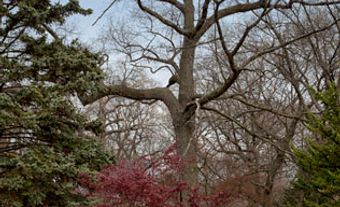Queen's Plate
Queen's Plate, a stakes race for thoroughbred horses, was first run at Toronto's Carleton Race Course on 27 June 1860. The course was built on the estate of William Conway Keele, where the Toronto Turf Club had established its headquarters. It received royal assent by Queen Victoria in 1859. In 1918 and 1919, to retain its perpetuity during World War I, the 59th and 60th runnings were staged as features of a Red Cross Horse Show in Toronto, the only racing held those 2 years. Thus, it is the oldest uninterrupted stakes race on the continent. (The Kentucky Derby's inaugural was held in 1875.)
Politicians lobbied to hold the race in their constituencies in the early years. It was raced in Ontario at Toronto, Guelph, St Catharines, Whitby, Kingston, Barrie, Woodstock, Picton, London, Hamilton and Ottawa before it settled permanently, with the Queen's approval, in Toronto in 1883. In its early years the race's atmosphere resembled that of a country-fair meet. Two or 3 heats, or trials, were run to select a winner. It was claimed that the race attracted a "rowdy" crowd, and there were charges of fixed races.
The race was called the Queen's Plate until 1902, the year after Victoria's death, when it became the King's Plate (after Edward VII). It reverted to the former name upon the ascension of Elizabeth II in 1952. George VI (with his Queen consort, Elizabeth) was the first reigning monarch to attend the race, at Toronto's Woodbine racetrack in 1939. Elizabeth II and Prince Philip attended the 100th running in 1959. The race was confined to Ontario-bred horses until 1944, when it was opened to 3-year-olds foaled in Canada. The race's distance varied from a mile (1.6 km) to 2 miles (until 1957, when it was fixed at a mile and a quarter). E.P. Taylor's Victoria Park established the race record, 2:02, at that distance in 1960. Winners such as the renowned Northern Dancer in 1964 and L'Enjoleur in 1975 could not match the time. Izvestia in 1990 finally broke the record with a race of 2:01:4. Since 1959 the race has been the first jewel in Canada's Triple Crown Series. New Providence in 1959, Canebora in 1963, With Approval in 1989, Izvestia in 1990 and the filly Dance Smartly in 1991 have all gone on to win the other 2 races, the Prince of Wales Stakes and the Breeders Stakes, after capturing the Queen's Plate.
The record for the most Queen's Plate wins is held by the Seagram family of Waterloo, who won the trophy 20 times between 1891 and 1935, followed by E.P. Taylor's Windfields Farm horses, who have gone to the winner's circle 11 times. Women have also earned a place in Queen's Plate history: in 2006 Josie Carroll became the first female trainer to produce a winner when she trained Edenwold to victory; and in 2006 Emma-Jayne Wilson, aboard Mike Fox, became the first-ever female jockey to win the race.
Though the trophy was indeed a plate in its early days, it has since been replaced by a gold cup. Plate winners earn a gift of 50 guineas from the monarch. But the little purple bag of coins contains not guineas but sovereigns. Minting of guineas was discontinued by George III, whose forebear, George I, instituted the royal gift of 50 guineas for thoroughbred race winners, a tradition that remains today.

 Share on Facebook
Share on Facebook Share on X
Share on X Share by Email
Share by Email Share on Google Classroom
Share on Google Classroom





